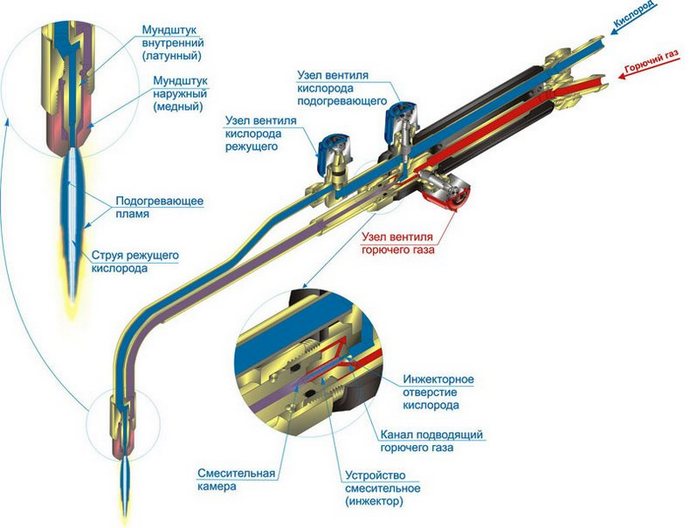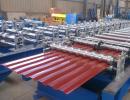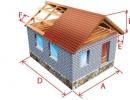Gas (oxygen) technology metal cutting
Over the years, humanity uses metal products. Some of them require preliminary cutting for the subsequent use of small pieces.
One of the methods of cutting metal is gas cutting. The technology of this method has its own characteristics and equipment used.
Metal gas cutter used to be widely popular in repair work. This cutting method was the main one.
The distribution of this method is substantiated by a number of features:
- Expands the possibilities of cutting blanks of large thickness;
- Does not require power from the power supply;
- High performance;
- The ability to perform complex operations;
- Manual and automatic operation mode.
This method allows you to handle carbon and alloyed steel, titanium alloys, brass, cast iron, lead, bronze, aluminum.
Gas cutting can be classified into categories in relation to the nature of the cut:
- Separation - characterized by the implementation of the end-to-end cut, which divides the workpiece to the desired number of parts;
- Surface - implies the removal of the surface layer of the workpiece, forming the necessary channels, slots and other structural sections;
- Cutting with a spear - implies the burning of the treated surface to produce opening or deaf holes.
Thus, the method allows to harvest the diverse metal parts, producing pipe welding of different diameters.
Technological stages
Gas cutting technology metal consists of such steps:
- Warming up metal blanks using a heater to a temperature of 1100 ° C;
- Introduction of oxygen flow into the processing zone;
- In contact with the oxygen with a metal surface, ignition occurs;
- Under the influence of ignition, the workpiece begins to "burn", forming the desired result of processing.
Preheating of the workpiece occurs under the action of a mixture of combustible gas and technical oxygen.

Propane-butane composition, acetylene, natural, pyrolysis or coke gas is used as a combustible gas. Acetylene and propane-butane composition are most popular.
In the process of ignition, the reaction of the formation of oxides. They blow out of the working area with the flow of oxygen. The oxidation of the metal occurs only in the areas of the action of the oxygen flow, which eliminates the reaction of the reaction in the metal. For the continuity of the cutting process, ensuring a jet of heating composition in front of the oxygen jet.
It should be borne in mind that the melting point of the processed metal must be greater than the magnitude of the ignition temperature in oxygen. Otherwise, the metal combustion will not occur.
As well as the melting indicator of the formed oxides must be lower than the corresponding indicators for the metal. This is justified by the fact that otherwise the products that have arisen will not leave the working area, but will remain on the surface of the workpiece. When choosing a billet, you need to navigate the thermal conductivity of the metal. What it is lower, the easier it will be ignition.
Cutter - cutting device
The change in the steps of the cutting process provides special equipment. It implies the appropriate stable design for the stability and safety of the operations. One of the main components is a gas cutter. There is also nozzles for welding and smelting used in a set with this equipment.

Cutting involves the accuracy of the dosage and compound of the gas mixture with oxygen. And this device also provides a warming flame and the introduction of oxygen into the work area.
Fortified cutters are injecting devices that work with steel thickness up to 30 cm. This cutter connects the cutting and warming unit. The heating unit includes valves responsible for supplying a gas mixture and oxygen. And also there is an injection cell, a mixing chamber, a feed tube, an outdoor muffin.

The cutting unit is formed by a tube with a cutting jet of oxygen, regulating the valve, internal type mouthpiece.
Gas mixture and oxygen move into a cutter through different inputs. Oxygen moves into an injector and mouthpiece to create a cutting jet. After the injector, oxygen is supplied to the mixing chamber where gas is also sent through its input opening.
After mixing, the composition turns out to be in the mouthpiece responsible for the formation of a warming flame. Valves allow changing streams.
Cutters can be divided by the area of \u200b\u200buse on:
- Manual - used for manual cutting;
- Machine - find use on cutting machines and machines.
There are still uninterblary cutters and tools for filing different combustible mixtures:
- Acetylene;
- Propane, butane and propane-butanes;
- Universal;
- Cutters for natural gas;
- Cutters for kerosene - have an evaporative unit for the manufacture of gasoline vapor, kerosene and gasoline-kerosene mixture.
At the beginning of the use of any cutter, its health is first checked. Then the device is purged by oxygen.
Applicable equipment
Metal cutting with gas implies the use of many basic and additional devices. In addition to the cutter, gas-cutting equipment, consists of:
- Reducer - is used in order to reduce the pressure of the directional gas to the required value. It contains two pressure gauges for measurements at the input and outlet.
- Pressure tool.
- Cylinders for gas and oxygen.
- Coupling hoses.

The gearbox provides pressure adjustment and automatic maintenance of the achieved value in a constant value. The gearbox can be formed by one or two cameras. If there are two cameras, the device rarely freeze, which is reflected in the reliability and sequence of operations.
Cylinders are made of steel. The volume is 0.4-55 dm3. They are equipped with a shut-off valve. Depending on the composition of the composition (oxygen or gas), valves are provided for various designs. With regard to the composition inside the cylinder, color differences and inscriptions have been developed.
In case of cutting with the use of special machines, the stationary finding equipment is implied. At the same time apply auxiliary devices:
- Table for cutting;
- Mechanism for removing the formed slags and cutting;
- System of moving the processed workpiece;
- Ventilation system.
In addition, other gas separation and work posts are provided.
Metal cutting equipment in broad scale includes component components:
- Carrier part;
- Cutter (maybe one or more);
- Drive device;
- Remote Control.
In large manufacturing enterprises, portable cutting machines are often used. The principle of their work does not differ from stationary devices.






